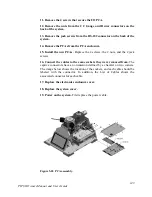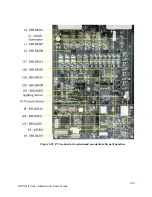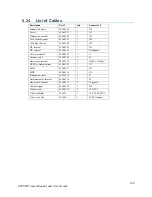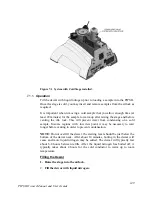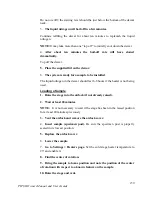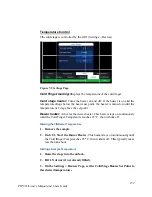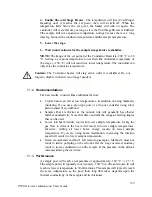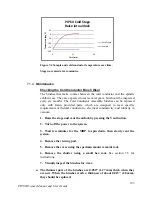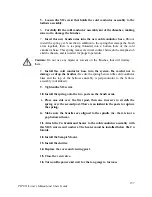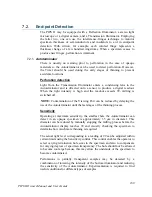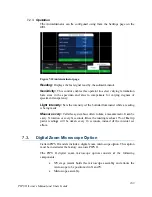
148
PIPS II Owners Manual and Users Guide
7.
PIPS II Options
7.1.
Cold Stage Option
Certain PIPS II models include a cold stage. This option must be installed at
the factory on a new PIPS II.
The PIPS II Cold Stage upgrade components replace existing PIPS II
components as follows:
The dewar assembly replaces the existing PIPS II vent-valve
assembly or liquid nitrogen trap.
The cold stage Whisperlok assembly replaces the existing
Whisperlok assembly.
The PIPS II I/O PCA connects to the dewar via a cable, and
provides a readout of the cold conductor temperature as well as
control of two heaters.
The first heater controls the temperature of the cold conductor, and the second
is used to boil-off the liquid nitrogen in the dewar. For instance, if a sample
has a phase-transition temperature at -100 °C that you would like to avoid, the
conductor temperature can be set to -50 °C prior to inserting the sample. In
addition, if the stage is cold and you would like to mill at room temperature,
you can set the conductor temperature to 23 °C.
When the dewar is filled with liquid nitrogen, it cools a copper plate that
extends into the specimen chamber. Copper braids connect that plate to a cold
conductor that sits next to the cold stage spindle. Brushes thermally connect
the cold conductor to the cold stage spindle. When the Whisperlok is lowered
into the milling position, it makes thermal contact with the cold conductor and
the sample is cooled. When the Whisperlok is raised into the air lock, it no
longer makes thermal contact with the cold conductor. The Whisperlok then
makes thermal contact with the o-ring in the air lock and comes into thermal
equilibrium with the chamber walls.
A thin glass rod (specimen mount window) is installed in the bottom of the
specimen mount in order to shield the vacuum window from sputtered
material. This rod can be removed and polished clean when deposited material
begins to block the light from the below sample illuminator. The vacuum
window cannot be easily cleaned, so it is important that the glass rod is always
installed. The chamber must be vented in order to clean this rod (see Cleaning
the Specimen Mount).










